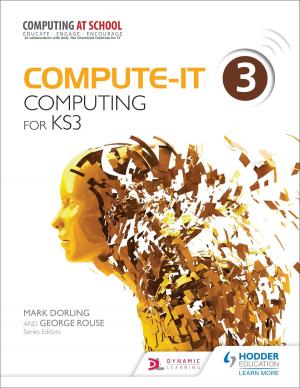| Author: | William R. Parks | ISBN: | 9780463290927 |
| Publisher: | William R. Parks | Publication: | October 12, 2018 |
| Imprint: | Smashwords Edition | Language: | English |
| Author: | William R. Parks |
| ISBN: | 9780463290927 |
| Publisher: | William R. Parks |
| Publication: | October 12, 2018 |
| Imprint: | Smashwords Edition |
| Language: | English |
"Sets, Numbers and Flowcharts" is part of a computer math series that includes: "Computer Number Bases," "Boolean Algebra and Switching Circuits," and "Introduction to Logic" available as paperbacks at Amazon.com
The author, William R. Parks, B.S., M.S., Ed.M., taught secondary level mathematics in private and public high schools in New York for five years. He taught community college mathematics and computer science for 25 years in New York, Tennessee, Maryland and Arizona. He was a computer science degree program developer at four colleges: SUNY Colleges at Buffalo and Fredonia, Elon University and D'Youville College. He was the technical editor for "Personal Computing" and "PC AI" magazines.
This text contributes to STEM-based instruction. STEM is an acronym that includes education in the fields of science, technology, engineering, mathematics and computer science. These areas of knowledge help students learn to communicate better in mathematics and computer science using sets, numbers, logic and flowcharts and displaying the information in many ways.
This text covers the fundamental concepts of sets, numbers and flowcharts used in data processing and computer applications in a simple and easy to understand format. We utilize a modified form of programmed instruction (PI) in this presentation. Small bits of information are presented in each frame before advancing to the next frame. Exercises are listed after several frames, followed by an answer key.
We also use example problems with an immediate presentation of the solution given right after the problem.
The immediate answer feedback approach to a problem is important when learning new concepts. The exercises serve the same purpose. Answers are given right after each set of exercises.
Sets and numbers go hand and hand with learning basic concepts of flowcharting. The mathematics of set theory is used to explain the basic principles of flowcharting for data processing applications.
A flow chart is a diagram that shows various types of boxes connected with lines and arrows which show the steps being taken and decisions being made within a computer or data processing application. Flow charts are prepared before programs are written. Flowcharts may also be used in business reports to explain workflows. They are often used to communicate decision steps and procedures effectively.
"Sets, Numbers and Flowcharts" is part of a computer math series that includes: "Computer Number Bases," "Boolean Algebra and Switching Circuits," and "Introduction to Logic" available as paperbacks at Amazon.com
The author, William R. Parks, B.S., M.S., Ed.M., taught secondary level mathematics in private and public high schools in New York for five years. He taught community college mathematics and computer science for 25 years in New York, Tennessee, Maryland and Arizona. He was a computer science degree program developer at four colleges: SUNY Colleges at Buffalo and Fredonia, Elon University and D'Youville College. He was the technical editor for "Personal Computing" and "PC AI" magazines.
This text contributes to STEM-based instruction. STEM is an acronym that includes education in the fields of science, technology, engineering, mathematics and computer science. These areas of knowledge help students learn to communicate better in mathematics and computer science using sets, numbers, logic and flowcharts and displaying the information in many ways.
This text covers the fundamental concepts of sets, numbers and flowcharts used in data processing and computer applications in a simple and easy to understand format. We utilize a modified form of programmed instruction (PI) in this presentation. Small bits of information are presented in each frame before advancing to the next frame. Exercises are listed after several frames, followed by an answer key.
We also use example problems with an immediate presentation of the solution given right after the problem.
The immediate answer feedback approach to a problem is important when learning new concepts. The exercises serve the same purpose. Answers are given right after each set of exercises.
Sets and numbers go hand and hand with learning basic concepts of flowcharting. The mathematics of set theory is used to explain the basic principles of flowcharting for data processing applications.
A flow chart is a diagram that shows various types of boxes connected with lines and arrows which show the steps being taken and decisions being made within a computer or data processing application. Flow charts are prepared before programs are written. Flowcharts may also be used in business reports to explain workflows. They are often used to communicate decision steps and procedures effectively.















